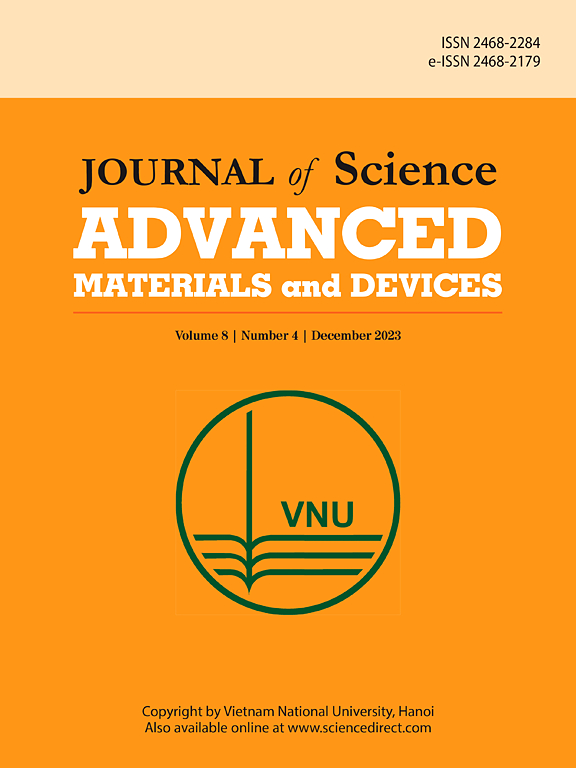Preparation, chemical characterization and determination of the antioxidant, cytotoxicity and anti-gastric properties of plant leaf aqueous extract green-synthesized gold nanoparticles
IF 6.7
3区 材料科学
Q1 MATERIALS SCIENCE, MULTIDISCIPLINARY
Journal of Science: Advanced Materials and Devices
Pub Date : 2025-03-26
DOI:10.1016/j.jsamd.2025.100882
引用次数: 0
Abstract
Gold nanoparticles (AuNPs) are known for their medical uses and have been the subject of much research. Both physical and chemical synthesis methods are employed to produce AuNPs. However, there is a growing interest among researchers globally in exploring alternative, more environmentally sustainable, and cost-effective large-scale production techniques, particularly those involving green synthesis through biological processes. This international emphasis on green nanotechnology research has caused the development of various nanomaterials that are suitable for physiologically and environmentally responsible applications. Here, gold nanoparticles were formulated utilizing the leaf of Lawsonia inermis for making the synergistic anti-gastric cancer and antioxidant effects. According to the antioxidant assay, the nanoparticles and BHT (butylated hydroxytoluene) respective IC50 values for 2,2-Diphenyl-1-picrylhydrazyl (DPPH) were 32 and 10 μg/mL. The characterization of the nanoparticles was conducted through various chemical techniques, including Fourier transform-infrared spectroscopy (FT-IR) and ultraviolet–visible spectrophotometry (UV–Vis), zeta potential, and transmission electron microscopy (TEM). The data suggested that the green-synthesized nanoparticles had an average size of 29.66 nm. The anti-human gastric cancer efficacies of the AuNPs were determined using the 3-(4,5-dimethylthiazol-2-yl)-2,5-diphenyl-2H-tetrazolium bromide (MTT) assay over 48 h on both normal human vascular endothelial cells (HUVEC) and gastric cancer cells, specifically MKN45 and NCI–N87. The presence of gold nanoparticles led to a decrease in the viability of malignant gastric cells viability. The IC50 values for the nanoparticles were determined to be 113 μg/mL for the NCI–N87 cell line and 120 μg/mL for the MKN45 cell line. Following an evaluation of the efficacy of these nanoparticles in clinical trial studies, it may serve as a promising alternative to traditional chemotherapy agents.
求助全文
约1分钟内获得全文
求助全文
来源期刊

Journal of Science: Advanced Materials and Devices
Materials Science-Electronic, Optical and Magnetic Materials
CiteScore
11.90
自引率
2.50%
发文量
88
审稿时长
47 days
期刊介绍:
In 1985, the Journal of Science was founded as a platform for publishing national and international research papers across various disciplines, including natural sciences, technology, social sciences, and humanities. Over the years, the journal has experienced remarkable growth in terms of quality, size, and scope. Today, it encompasses a diverse range of publications dedicated to academic research.
Considering the rapid expansion of materials science, we are pleased to introduce the Journal of Science: Advanced Materials and Devices. This new addition to our journal series offers researchers an exciting opportunity to publish their work on all aspects of materials science and technology within the esteemed Journal of Science.
With this development, we aim to revolutionize the way research in materials science is expressed and organized, further strengthening our commitment to promoting outstanding research across various scientific and technological fields.
 求助内容:
求助内容: 应助结果提醒方式:
应助结果提醒方式:


